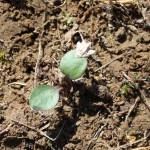As reported by NASS on May 23, 2011
SOYBEAN PLANTING BEGINS IN EARNEST, CORN PLANTING STILL UNDERWAY
For most of last week, inclement weather stayed out of the way and allowed Tennessee farmers to plant. Crop producers were able to follow up with another productive week. Nearly half of the state’s cotton acreage and one-fourth of the soybean acreage were planted by week’s end. With the exception of low-lying fields affected by earlier flooding, most of Tennessee’s corn for grain acreage has been planted and row crop farmers have turned their attention to planting single-crop soybeans and corn silage. Continue reading



